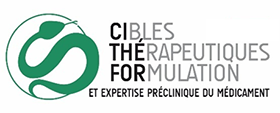La revue ci-dessous, fruit de la collaboration internationale et co-tutelle de thèse de Justine Bonetti avec l'Université de Pise vient d'être acceptée :
Bonetti J., Corti A., Lerouge L., Pompella A., Gaucher C. Phenotypic modulation of macrophages and vascular smooth muscle cells in atherosclerosis – Nitro-redox interconnections. Antioxidants 2021, 10(4), 516; https://doi.org/10.3390/antiox10040516 (registering DOI)
Abstract
Monocytes/macrophages and vascular smooth muscle cells (vSMCs) are the main cells types implicated in atherosclerosis development, and unlike other mature cell types both retain a remarkable plasticity. In mature vessels, differentiated vSMCs control the vascular tone and the blood pressure. In response to vascular injury and modifications of local environment (inflammation, oxidative stress), vSMCs switch from a contractile to a secretory phenotype and also display macrophagic markers expression and a macrophagic behaviour.. Endothelial dysfunction promotes adhesion to endothelium of monocytes, which infiltrate the sub-endothelium and differentiate into macrophages. The latter become polarised into M1 (pro-inflammatory), M2 (anti-inflammatory) or Mox macrophages (oxidative stress phenotype). Both monocyte-derived macrophages and macrophage-like vSMCs are able to internalise and accumulate oxLDL, leading to formation of ‘foam cells’ within atherosclerotic plaques. Variations in the levels of nitric oxide (NO) can affect several of the molecular pathways implicated in the described phenomena. Elucidation of underlying mechanisms could help to identify novel specific therapeutic targets, but to date much remains to be explored. The present article is an overview of the different factors and signaling pathways implicated in plaque formation and of the effects of NO on molecular steps of the phenotypic switch of macrophages and vSMCs.

